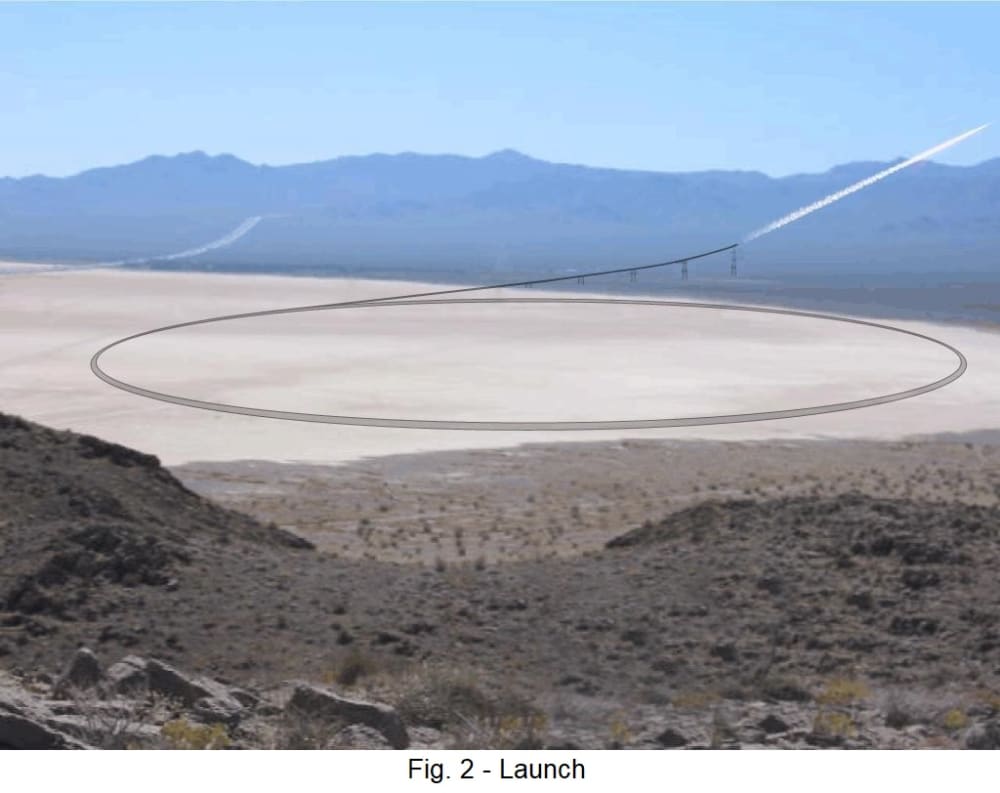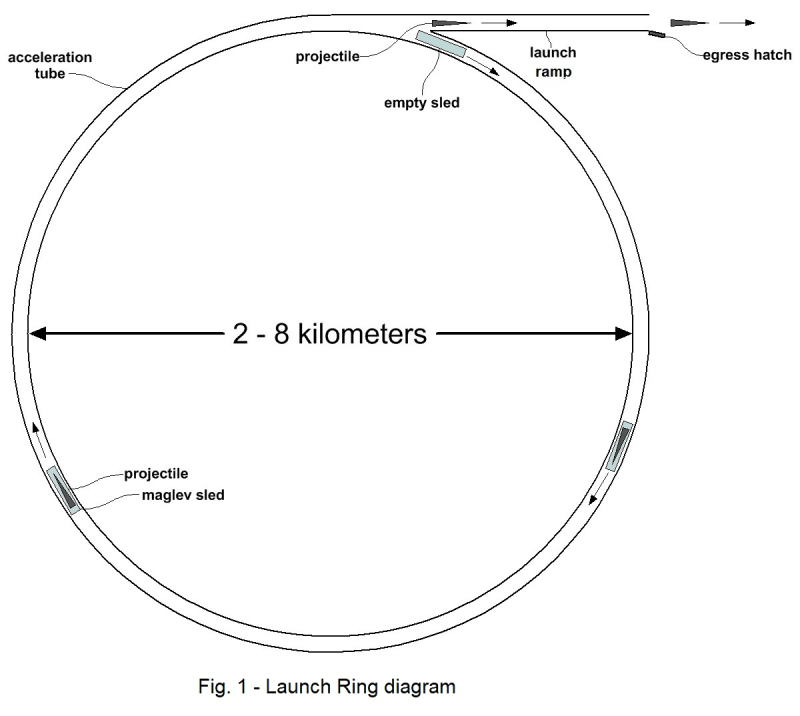Rocket launch to space is expensive – typically thousands of dollars per pound. But now there is an alternative. High-force magnetic levitation makes it possible to construct a circular accelerator – the “Launch Ring” – with the potential to launch multiple payloads per hour into orbit at far lower cost.
The conceptual design, developed under the auspices of the U.S. Air Force Office of Scientific Research, is shown in Fig. 1. A linear synchronous motor accelerates a maglev sled around an enclosed, evacuated circular track for an extended period using relatively low power. Just 20 MW – equivalent to an electric locomotive – will accelerate a 2000 kg sled to 9 km/second in about an hour. When it reaches launch speed the projectile is released into a tangential launch ramp and through an egress hatch. As the projectile streaks away, shown in Fig. 2, the sled decelerates in the ring to be reused. Multiple launch ramps can be employed to launch accommodate various trajectories. The cryogenic cooling and vacuum equipment required by the system is identical to that used in synchrotron particle accelerators such as the LHC.
The projectile must withstand high g’s during acceleration and be highly streamlined, as shown in Fig. 3. It’s fabricated using high-strength, high-temperature materials and equipped with maneuvering thrusters and a rocket engine for orbital insertion. A 1000-kg projectile with a payload of 600 kilograms will have an initial cost of ~$200,000, but as production quantities increase cost will drop rapidly. At 3000 shots per year, with O&M and accelerator amortization added, the resulting launch cost of $65/lb. of payload is far lower than any other launch technology. At higher launch rates cost could drop below $30/lb.
High-g structures and components are well developed – precision guided munitions experience gun shocks of 20,000 g’s. Similar designs are applicable to Launch Ring payloads, but will be subjected to only 3000 g’s or less, easing constraints. Folding antennae, mirrors, airfoils, or inflatable structures are feasible. Satellite constellations for telecom, Earth observation or other uses could be deployed and maintained quickly at low cost.
For every person in space many tons of oxygen, fuel, food, water, components, construction materials and radiation shielding will be needed, and can be shipped cheaply via Launch Ring. Tele-operated robots could assemble facilities of any size, with their operators safe and comfortable on the ground below. More robots, test equipment, and living space along with communication, imaging, and radar satellites of unprecedented capability, vehicles for transport to higher orbit, solar energy collectors, space and planetary exploration vehicles—all are candidates for assembly. The cost to establish and maintain a major space presence could be radically reduced.
Low cost space launch is the first step in opening up the universe beyond Earth to human expansion. Adequate support could lead to industrial-scale Launch Rings in less than ten years. This would truly be a landmark facility—a gateway to unlimited opportunity in space
Like this entry?
-
About the Entrant
- Name:Jim Fiske
- Type of entry:individual
- Software used for this entry:MathCAD, Excel, C++, FEA, Solidworks
- Patent status:none








